SPECIMEN CUPS & SUPPLIES
10.5 mL Vacuum Tube
No Additive
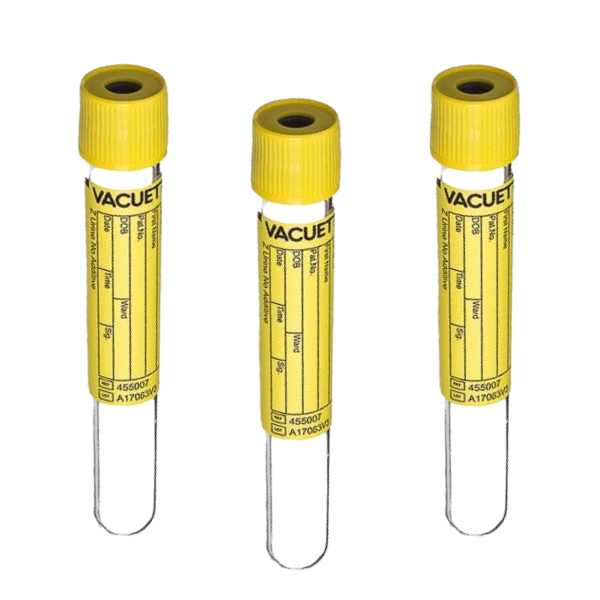
Urine Container
Cup /w Needle
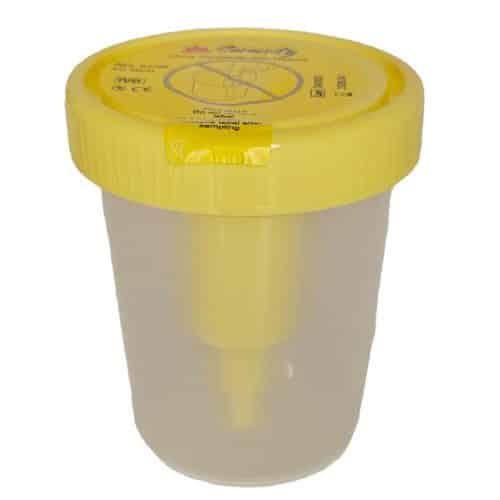
Urine Specimen Container
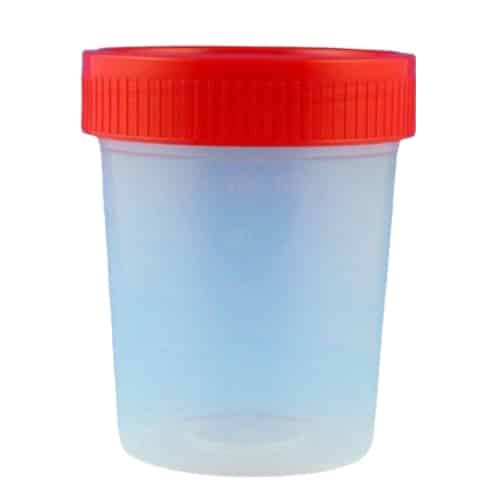
Urine Container Kit w/Needle and Tube
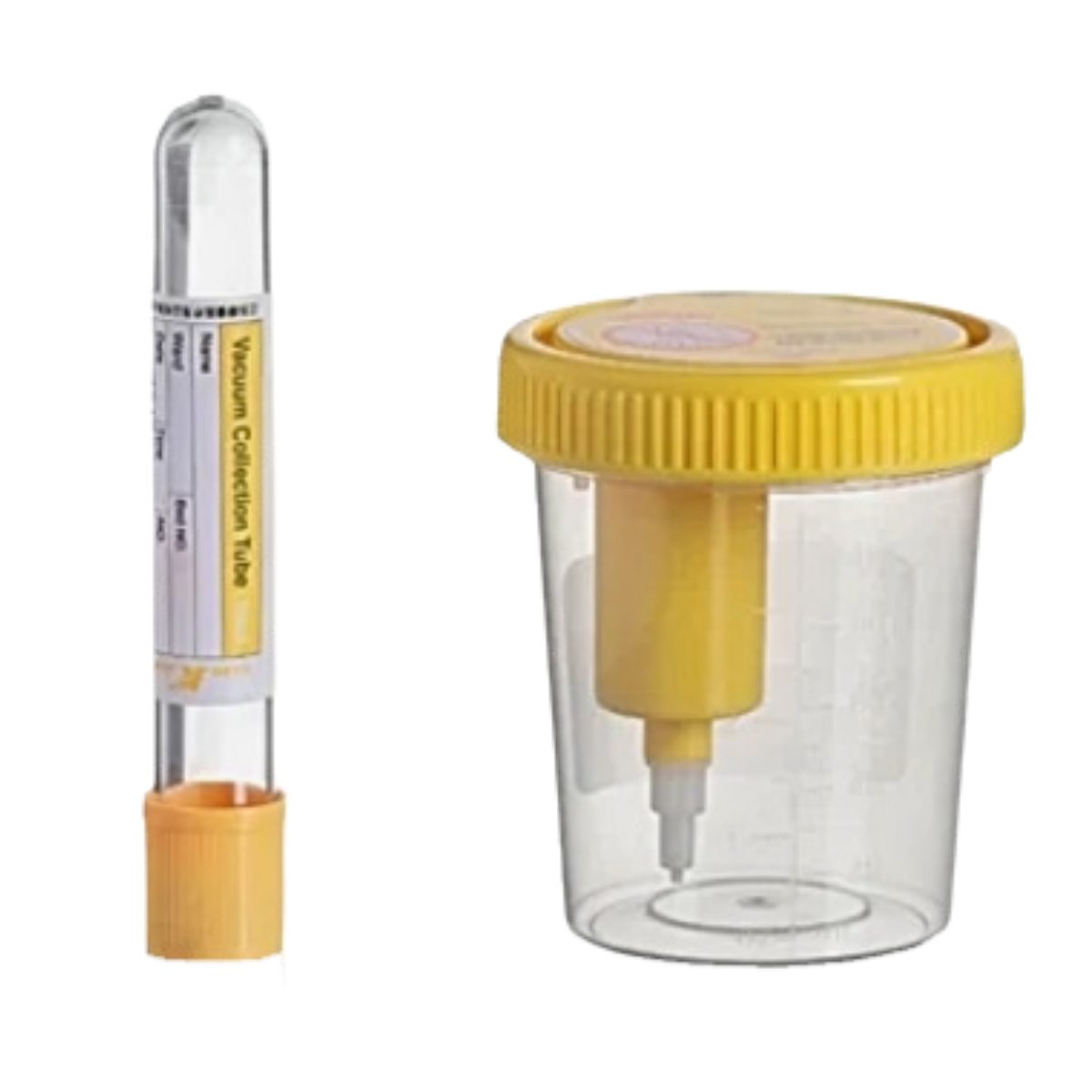
5mL Vacuum Tube No Additive
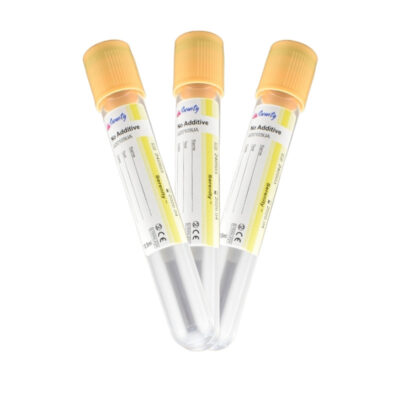
12 Panel Container Needle with Tube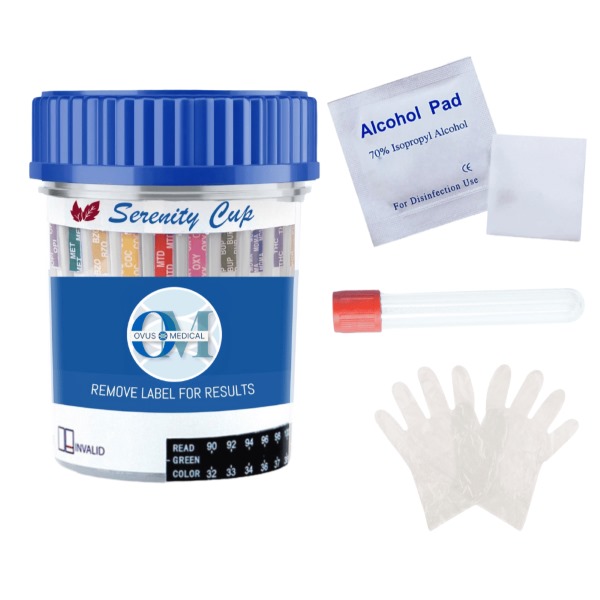
Urine Specimen Cups With Temperature Strip
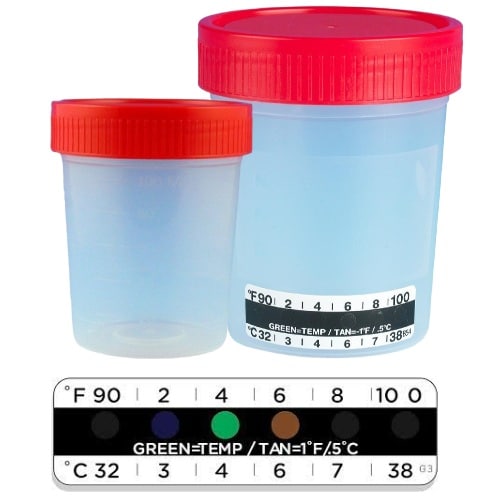
More Info
What are Specimen cups?
Specimen Cups, also called sample cups or collection cups, are necessary for collecting and storing biological samples of blood, saliva, and body fluids like urine to determine various tests. Made from high-quality, long-lasting, pliable, and tough cover components, these cups are generated in different sizes and shapes based on the collected data.
This can be o prevent leaks and contamination during storage and transit; they often have closures like screw caps or snap closures. For drug tests, DME Forensics uses tamper-evident sealing to ensure sample integrity.
Some urine specimen cups have graduated marks, which can help determine how much of a specimen was collected. These containers are useful in forensic investigation and medical research, including diagnostic testing required regularly in various hospitals/labs/research institutes.
For drug testing, sample cups are an example of a device that ensures the standard and reliability of samples taken. Because they can preserve different biological samples under proper conditions, these are important tools in scientific research, industrial testing, and medical diagnostics. This guarantees that the test is always done properly and that the results will not be fake.
The Value of Specimen Cup in a Range of Industries
From hospital and veterinary clinics to any laboratory, specimen cups near me are incredibly important as they ensure accurate samples can be collected every time. This article will detail their importance in a couple of critical areas:
Healthcare: This type of sample (urine, feces, and other body fluids) is collected in cups for diagnostic testing at healthcare facilities. It allows medical personnel to check in on a patient’s condition, diagnose diseases, and monitor the effectiveness of treatment.
Drug Testing: Specimen Cups are essential to drug testing procedures in law enforcement and the workplace. They allow the collection and testing of urine samples to detect drugs or their metabolites.
Research: Specimen cups are crucial for gathering samples for scientific and medical research examination. Ensure the samples are properly stored and maintained for future use in research, clinical trials, genetic material analysis, and biobank construction project development.
Types of Specimen Cups
Specimen collection cups are made for different purposes and are available in various ways. Let’s look at the most popular kinds of sample cups:
1. Cups for urine specimens
The cups that are more familiar to the public, such as urine cups used at drug testing and medical environments, are manufactured to collect urine samples. They often have a tight-sealing lid to prevent spills during transport or storage.
2. Cups for Swab Collection
Swabs are a standard sampling tool that needs a metal swab collecting cup (disposable or repeatable) to take samples from surface areas or body cavities for testing by removing them with hands into transport tubes/vials. The sterility and safety of the environment in which these cups with swabs are kept allow us to be certain about the integrity of the samples we have obtained. They are also used in forensic investigations, DNA analysis, and microbiological tests.
Additional Specimen Cup Types
Many specialized cups are available for certain sample-collecting purposes, in addition to buying specimen and swab collection cups. Among the instances are:
Stool Collection Cups: These cups collect stool samples for fecal occult blood tests, gastrointestinal diagnostics, and other diagnostic uses.
Saliva Collection Cups: These cups gather saliva samples that may be examined for several reasons, such as hormone level evaluation, genetic testing, and drug testing.
Blood Collection Cups: Blood samples are collected for laboratory testing using blood collection cups, often called blood collection tubes. Vacuum and microtiter tubes are two varieties of these cups that are available based on the particular testing requirements.
Selecting the Right Sample Cup
Several factors must be considered while choosing the specimen cup to ensure the specimens are collected and preserved best. Now let’s explore these factors: Now let’s explore these factors:
1. Dimensions and Absorbency
The size and overall capacity of the specimen cup should closely relate to the quantity of the sample collected and its reception’s overall size and capacity. The cup to be selected should be of an appropriate size to contain the required amount of that substance without spilling or overflowing while being collected.
2. Leak-Proof Architecture
Another critical feature is the ability of the cup to seal to minimize instances of leakage of the sample in case it is stored or transported some distance. When selecting cups for the samples you should ensure that the sample is not contaminated, therefore look for cups that are; =head3 Have lids or caps.
3. Monitoring of Temperature
In certain instances, temperature monitoring is required to guarantee the authenticity of the sample. It is possible to check whether the sample has been stored within the necessary temperature range using integrated temperature strips or labels.
The Best Methods for Gathering Specimens
Strict measures of specimen collection provide genuine and reliable outcomes; for this reason, a proper specimen-collecting process is essential. To achieve the best possible sample collection, adhere to following recommended practices: To achieve the best possible sample collection, adhere to following recommended practices:
1. Getting the Patient Ready
Before giving a specimen, one must be clear while explaining to the patient or the individual who will be tested. Inform them of any restrictions on the foods they are allowed to eat or some medications they are taking, as they may affect the sample’s composition. It is also necessary to underline the necessity of good handwashing practices, for example.
2. Getting Correct Labeling Done
It required labeling to track and recognize specimen cups for urine during the testing procedure. Patient identity information that should be written or printed on each specimen cup includes name, date of birth, and any other identification number. This ensures sample identification and minimizes confusion that different researchers may occasion when using similar labels or numbers.
3. Gathering the Sample
Use the proper method for gathering the particular kind of specimen. To avoid contamination, it’s crucial to utilize sterile collecting instruments like swabs or collection cups. To reduce the amount of pollutants present, tell the person collecting the urine to deliver a midstream sample.
4. Taking Care of and Moving the Sample
Once obtained, the specimen must be treated carefully to preserve its integrity. Tightly fasten the cap or lid to stop leaks while in transit. Ascertain appropriate care and handling according to the sample’s needs if it has to be refrigerated or transported in a certain temperature range.
By adhering to these best practices, You can ensure that specimen collecting is accurate and trustworthy.
Storage and Security for specimen cups bulk
Proper storage and security protocols are essential for gathered specimens to remain intact and of high quality. Now let’s explore these points:
1. Adequate Storage Environment
Certain specimen types require different storage conditions. The humidity and temperature in the storage area should be appropriate for the sample. Inadequate storage circumstances may jeopardize the specimen’s viability and integrity.
2. Safety Procedures
Samples in specimen cups in stores that might be dangerous or sensitive should be maintained carefully to avoid theft or manipulation. Establish access restrictions, such as limiting access to storage spaces, and record who handles the specimens.
3. Custody chain
A strict chain of custody must be followed, particularly when using evidence for legal or forensic reasons. To ensure accountability and preserve the sample’s integrity, this entails recording how specimens are handled and moved from the collecting location to the laboratory.
Following appropriate storage and security measures can preserve the caliber and dependability of specimens obtained. Let’s examine some typical problems with collecting specimens and how to solve them.
Typical Obstacles and Problem Solving
Even with the best measures followed, specimen collecting might occasionally provide difficulties. Let’s look at some typical problems and practical solutions for them:
1. Problems with Contamination
Improper hygienic measures taken during specimen collection may result in contamination. To reduce the chance of contamination, ensure the containers and collecting instruments are sterile and that everyone participating in the process uses good hand hygiene practices.
2. Integrity of Specimens
To yield reliable findings, the specimen’s integrity must be maintained. Make sure the specimen cup is shut tightly to avoid leaks or evaporation. Additionally, don’t wait needlessly to get the specimen to the lab; storing it longer than required will deteriorate it.
3. Not Enough Volume
The specimen obtained might not always have the needed volume for analysis. Scarce patient orders or tests in gaining a large enough sample may cause this. Teach patients about the collection way correctly, and if you try again and it doesn’t work, think about other options.
You may lessen the effect on specimen quality and loyalty by taking active measures to resolve these snags.
Specimen Cup Removal
It is bossy to properly dispose of urine specimen collection cups to maintain directing submission and ease any threats.
1. Regulations for Disposal
Observe local rules and laws while placing cups and related things. Because the contents of some samples may be biohazardous, there may be precise rules for their removal. These rules pay to the shield of the setting and public health.
2. Eco-Friendly Choices
When placing waste, choose eco-friendly systems wherever viable. This might entail using ecological changes or reusing plastic cups. Select disposal systems that respect legal standards and reduce the negative effects on the setting.
By disposing of waste in the right way, you can help create a safer and more sustainable environment.
Specimen Cups for Drug Examination
For example, cups play a major role in drug testing systems by meeting samples for check. Now let’s look at the function of cups in DOT and non-DOT drug test states:
1. DOT Drug Examination
Drug testing is directed by the Department of Transportation (DOT) for those working in areas where safety is a concern, such as salable drivers. Urine specimen cups Wholesale are essential for collecting urine samples for analysis. Maintaining the integrity of the testing process requires respect for DOT foods, which includes using official cups.
2. Drug Testing Outside of DOT
Specimen cups are also used in non-DOT drug testing programs, including those run by trades, to collect samples. These cups allow urine samples to be safely collected and elated, ensuring reliable drug test results. The loyalty of non-DOT drug testing actions depends on adherence to industry standards and best practices.
Cups of Specimens for Medical Research
Where to buy urine specimen cups? High-quality specimens from Ovus Medical are necessary for various studies and analyses in medical research. Using cups is a big part of making sample collecting for medical research easier. Let’s examine a few exact use cases:
Genetic and DNA Testing
Cups are often used to collect samples for DNA and genetic testing. They offer a safe and sterile setting for collecting DNA samples for fatherliness testing, genetic research inquiries, or recognizing genetic biases.
Clinical Inquiries
It is frequently needed to gather different kinds of specimens for clinical studies, with blood, urine, and saliva. By collecting and storing these samples, specimen cups help scholars maintain the precision of the data used in clinical trials.
The use of biobanking
Biobanks are collections of biological specimens kept for use in medical research. Specimen cups are essential for meeting, preserving, and ordering samples in biobanks. These cups ensure the specimens are viable for future research projects by preserving their quality and traceability.
In Forensic Science, Specimen Cups
Forensic science depends on exact and reliable specimen collection to assist with criminal inquiries and court cases. Cups are essential for some forensic uses. Let’s look at a few of these uses:
Investigating Crime Scenes
At crime scenes, cups and body fluids like saliva and blood gather various samples. The truth of the sign, which might be vital in solving crimes, must be well looked after through the proper amassing and storage of these samples in cups.
DNA Examination
In forensic science, DNA analysis is a potent technology that allows for the proof of identity and profile of people based only on their genetic makeup. DNA samples are met and kept in specimen cups to ensure their defense until analysis is possible.
Testing for Toxicology
In forensic science, toxicology testing entails probing human fluids and tissues to check for the company of drugs or other harmful materials. It is vital for gathering samples, such as blood or urine, which allows for precise toxicological testing and study.
Emerging Trends in Specimen Cups: New changes and patterns are rewriting the cup sector nonstop. The next are some new trends to be aware of:
Smart Specimen Cups
Smart specimen cups with sensors and united nursing features are growing in popularity. To ensure suitable sample groups and storage settings, these cups can monitor temperature and sample volume and even offer real-time notifications.
Globally Friendly Substances
There is an increasing market for naturally friendly specimen cups made of green or recyclable materials as sustainability becomes a higher priority. The eco-friendly effect of typical plastic cups is conical with using these cups.
Uniting Laboratory Data Systems with Addition
The integration of specimen cups with workshop information systems is making the process of dealing with samples more efficient. Barcode or RFID technology makes error-free monitoring and recording of specimen cups possible, boosting output.
As these trends continue influencing cup design, we may anticipate even more developments in sample collecting and storage procedures.
FAQS
Q1. How are specimen cups constructed?
Specimen jars are usually made of strong, quality plastic materials to maintain the integrity of the collected sample. Because of its sturdy design, it keeps the specimen safe from potential harm and compromise over its handling, transit, and storage. The materials’ tamper-evident, chemical-resistant, and leak-proof designs offer extra security. These containers also often have secure lids, which keep the sample safe from environmental contaminants and improper handling by limiting loss and exposure to the outside world. This guarantees the test results’ reliability and accuracy for therapy or medical use.
Q2. What scopes are offered for sample cups?
Specimen cups come in various sizes to suit varied calls, depending on the sample collected and the precise volume needed for proper testing. These cups are variable, subject to the volume of sample required for analysis, with a typical range of 3.5 to 6.5 ounces. Smaller cups, roughly 3.5 ounces, are frequently used for standard urine tests or when a small sample is required. However, bigger cups up to 6.5 ounces—are preferred for reasons requiring a higher amount, including when several tests must be done on the same material. This size range ensures that doctors and scientists have the right vessel for various tests, including those using urine, saliva, or other body fluids. Convenience is also improved by the size variety, which makes sample collection easier and avoids buying extra containers while keeping the accuracy and integrity of the data.
Q3. Which sectors make use of specimen cups?
Usually, biological specimens are gathered and stored in specific boxes to maintain the sample’s integrity. These cups are vital in various settings, such as research labs, medical diagnostics, drug testing, and forensic investigations. For exact testing and analysis, the degree to gather uncontaminated specimens is crucial to each of these drives.
Sample cups are used in research labs to collect biological samples, such as blood, urine, saliva, or tissue, for studies on illnesses, genetics, or drug development. These cups are also used to store urine, saliva, or blood samples for drug tests, in particular clinical or business contexts, to check for the presence of illicit or prescribed drugs.
Q4. Are the seals on the specimen cups tamper-evident?
A vital part of many specimen cups, tamper-evident closures guard the integrity of the material collected and inhibit unwanted intrusion. This is especially vital in situations when the reliability and precision of the samples are at stake, such as drug tests or court cases. Once sealed, any effort to open the cup will be easily seen, deterring contamination or abuse.
Tamper-evident seals, for example, are vital for maintaining the validity of test findings in drug testing. When samples are taken, particularly for forensic investigations or pre-employment screens, any hint of distortion might raise concerns over the validity of the findings and possibly result in legal issues. Similarly, these secure closures provide peace of mind that the sample hasn’t been messed with or filthy after collection in legal contexts like court-ordered testing or custody disputes.
Q5. Can you reuse the specimen cups?
Specimen cups are made for one-time use, not for repeated use, to maintain sanitary standards, avoid cross-contamination, and assure reliable and precise test findings. Reusing model cups may cause contamination from remnants, affecting the sample’s integrity and perhaps altering test findings or adding extra variables to the study.
Cleanliness is crucial in healthcare events. Biological samples, such as urine, saliva, or other fluids containing bacteria, viruses, or other pathogens, are often gathered using sample cups. By using these cups just once, doctors may lower the possibility of spreading infections between patients and guarantee that every test is performed in a clean setting.
Also, using single-use cups reduces the chance of infection between samples. In laboratory settings, tiny amounts of impurity from an earlier test may cause delays to later tests, resulting in unclear or false outcomes. This is especially true for drug testing, medical diagnostics, and forensic investigations since even the tiniest mistake might have major consequences.
Conclusion
where can I get a specimen cup? Ovus Medical provides the best specimen cups for the precise crowd and safe carriage of body fluid samples, especially those used in urine drug testing. These temperature-strip-equipped specimen cups offer a dependable and user-friendly option for drug testing firms, doctors, and nurses.
Because Ovus Medical knows the need for truth and security in the collection, its cups include safe-closing devices that stop pollution or leaks while in transit. The temperature strips verify that the sample was taken within the appropriate temperature range, ensuring that the sample’s honesty is maintained.
These features make Ovus Medical’s cups a reliable option for various industries, such as healthcare, job screening, and private home testing. Because of its keenness to create high-quality, user-friendly crops, Ovus Medical is a respected seller in the drug testing supply sector, guaranteeing an effective and dependable specimen-collecting method.
